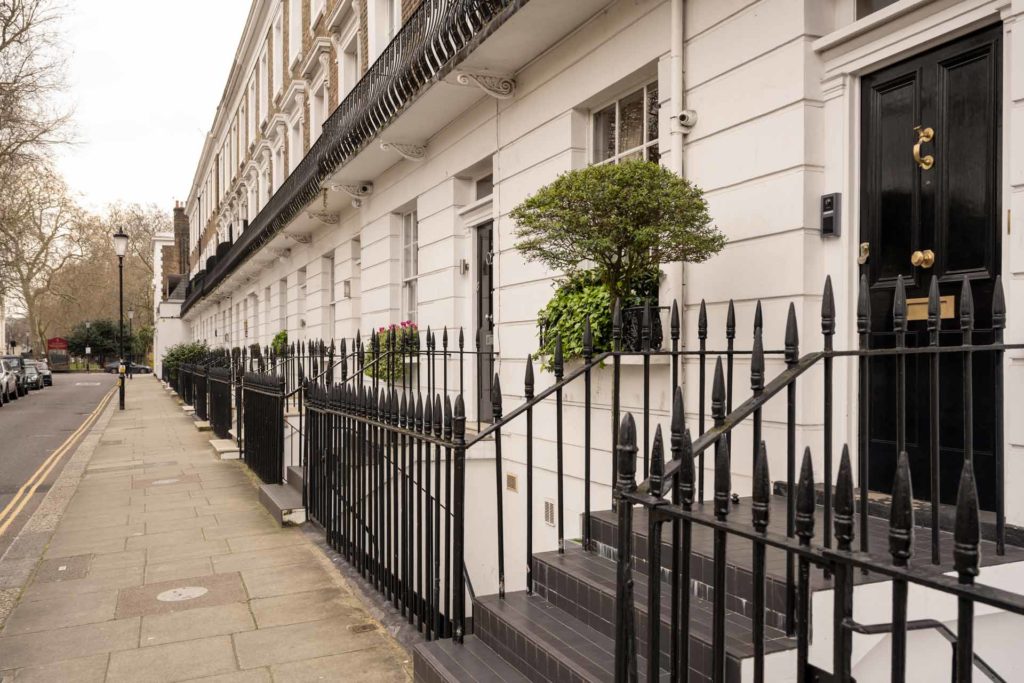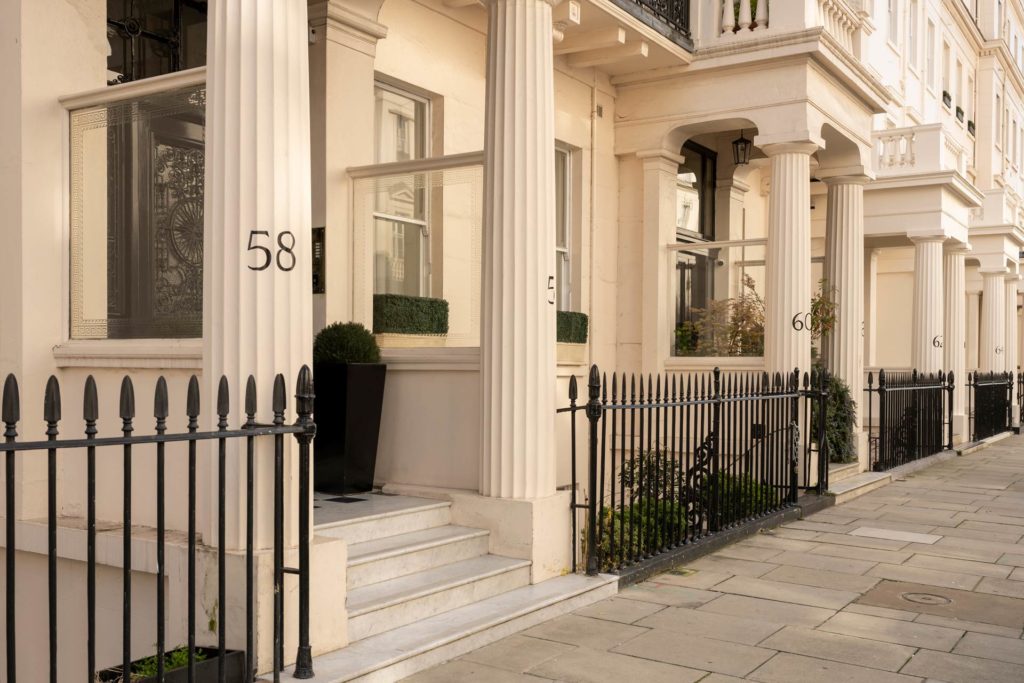The Evolution of Luxury Property Management in London
The team at Footman & Butler Prime Property Management are deeply involved in the luxury property market in London. We have witnessed first-hand the remarkable transformation of this vibrant sector. London, a city renowned for its elegance and sophistication, has long been a hub for luxury properties.
The Early Days: Historical Perspective
In the early 20th century, the concept of luxury was quite different from what we know today. The rise of grand estates and their meticulous management during the pre-war era laid the foundation for what would become a thriving industry.
The early 20th century was a period of immense change and transformation, not just in the broader socio-political landscape, but also in the realm of luxury and opulence. London, with its rich tapestry of history and culture, was at the forefront of this evolution.
In those days, luxury wasn’t just about ostentation or grandeur; it reflected one’s social standing, lineage, and legacy. Homes were not mere brick-and-mortar structures; they were symbolic of a family’s heritage and prestige. The sprawling mansions and grand estates that dotted London’s prime locales were more than just residences; they were symbols of aristocracy and affluence.
These grand estates, often passed down through generations, were architectural marvels, boasting intricate designs, expansive gardens, and art collections that rivalled those of museums. However, with such grandiosity came the challenge of upkeep. Maintaining these estates in their pristine glory required an army of staff, from gardeners and stable hands to butlers and maids. This was not just about cleaning and maintenance; it was about preserving a way of life, a tradition, and a legacy.
The management of these properties was an art form. It wasn’t merely about ensuring that the lawns were mowed or the silverware polished. It was about orchestrating a symphony of activities that ensured the smooth running of the household, from organising grand balls and soirees to ensuring that the household staff performed their duties seamlessly.
Moreover, the pre-war era was a time of social change. The Industrial Revolution had given rise to a new class of wealthy entrepreneurs and industrialists. These nouveau riche, keen to establish their social standing, began acquiring grand estates, further fuelling the demand for skilled property management.
It was during this period that the seeds of professional property management were sown. The need for expertise in managing these grand homes led to the emergence of agencies and professionals specialising in estate management. They brought with them a blend of traditional practices and innovative techniques, ensuring that these homes were not just maintained but thrived.
In essence, the early 20th century was a crucible where tradition met innovation, setting the stage for the luxury property management industry as we know it today. The grand estates of yesteryears and their meticulous management have left an indelible mark, shaping the ethos and practices of modern luxury property management.

Post-War Era: Changes and Challenges
The impact of World War II was profound, reshaping the luxury property market. The post-war period brought new challenges and opportunities, leading to a shift in how luxury properties were managed and maintained.
The war’s aftermath saw many of the city’s grand estates, once symbols of opulence and grandeur, bearing the scars of conflict. Bombings had damaged several properties, and many had been repurposed for the war effort, serving as makeshift hospitals, barracks, or administrative centres.
As the war clouds receded, London faced the daunting task of rebuilding. For the luxury property sector, this meant not just physical reconstruction but also a reimagining of its very essence. The immediate post-war years saw a scarcity of resources, leading to innovative approaches in restoration. Traditional materials were often replaced with newer, more readily available alternatives, leading to a blend of the old and the new in architectural designs.
Moreover, the societal fabric had undergone a transformation. A burgeoning middle class, buoyed by post-war economic opportunities, began to aspire for luxury living. This democratisation of luxury meant that property management had to evolve, catering not just to the aristocratic elite but also to the new affluent class.
The challenges that lay ahead. There was a need for modern amenities, a shift towards more functional designs, and an emphasis on security and privacy. Property managers now had to balance the traditional charm of these estates with contemporary conveniences. This period also saw the rise of regulatory frameworks aimed at preserving historical properties while ensuring they met modern safety standards.
In essence, the post-war era was a crucible of change for the luxury property market. It was a period of adaptation, innovation, and resilience, laying the groundwork for the multifaceted industry we see today.
The Swinging Sixties to the Opulent Eighties
The cultural revolution of the sixties and the opulence of the eighties influenced luxury living in London. During these decades, modern luxury property management firms began to emerge, reflecting the changing tastes and lifestyles of the times.
The sixties in London were synonymous with liberation, creativity, and a break from tradition. The city became a global epicentre for music, fashion, and art. This cultural renaissance, coupled with economic prosperity, transformed the luxury property landscape. Homes began to reflect a blend of traditional British elegance with contemporary designs and amenities.
The eighties further amplified this trend, with an influx of international wealth and a booming property market. As London’s skyline evolved, so did the demands of its residents. Property management firms, recognising this shift, adapted swiftly. They began offering bespoke services, catering to a clientele that sought the perfect amalgamation of heritage and modernity in their luxury properties.
The 90s and Early 2000s: Technological Advancements
Technology played a pivotal role in transforming property management during the 90s and early 2000s. The rise of digital platforms revolutionised the way we manage and interact with luxury properties.
The dawn of the 90s heralded an era where technology began to seamlessly integrate into our daily lives. In the realm of luxury property management, this technological wave brought about unprecedented changes. Gone were the days of manual record-keeping and in-person inspections.
With the advent of digital platforms, property managers could now oversee multiple estates at the click of a button. Advanced software allowed for real-time tracking of maintenance schedules, financial transactions, and tenant communications. Furthermore, the early 2000s saw the rise of smart home systems, enabling residents to control everything from security to climate with digital devices. This era wasn’t just about convenience; it was about enhancing the luxury living experience, ensuring that properties weren’t just well-managed but also equipped with the latest technological innovations.
The Modern Era: Tailored Services and Personalisation
In today’s fast-paced world, the definition of luxury has evolved to mean more than just opulence; it’s about creating bespoke experiences that resonate with individual preferences. Companies at the forefront of this evolution, like Footman & Butler Prime Property Management, have recognised this shift and adapted accordingly.
Gone are the days when property management was a one-size-fits-all service. In the modern era, it’s about understanding the unique needs of each client and crafting services that cater specifically to them. Whether it’s curating art for a residence, organising exclusive events, or providing concierge services akin to a five-star hotel, the emphasis is on creating a seamless and personalised living experience.
Moreover, the blend of traditional care, rooted in a deep understanding of property heritage and values, with contemporary amenities ensures that residents enjoy the best of both worlds. It’s this meticulous attention to detail, combined with a commitment to personalisation, that sets modern luxury property management apart. In essence, it’s not just about maintaining a property; it’s about elevating the living experience to unparalleled heights.
Challenges and Opportunities in the Current Market
The luxury property market, much like other sectors, has navigated a tumultuous path in recent times. Economic downturns, often resulting from global events, have led to fluctuating property values and a cautious approach from investors. The global pandemic, particularly COVID-19, brought about unprecedented challenges, from travel restrictions affecting international buyers to the need for implementing stringent health and safety protocols.
However, every cloud has a silver lining. These challenges have spurred innovation and adaptation. For instance, the pandemic led to the rise of virtual property tours, allowing potential buyers to explore properties from the comfort of their homes.
Furthermore, there’s been a noticeable shift towards sustainable and Eco-friendly property management practices, catering to the growing demand for green living. In essence, while the luxury property market has faced hurdles, it has also reinvented itself, turning challenges into catalysts for growth and evolution.
The Future: Predictions and Trends
At Footman & Butler Prime Property Management, we’ve always prided ourselves on being at the cutting edge of the luxury property sector. As we cast our gaze toward the future, it’s evident that technology will remain at the heart of our operations. From smart home integrations to AI-driven customer service, the digital realm promises to enhance the luxury living experience even further.
Sustainability is not just a buzzword for us; it’s a commitment. We recognise the growing demand for Eco-friendly living solutions, and we’re dedicated to implementing practices that not only benefit our esteemed clients but also have a positive impact on our environment. Our focus on green initiatives, from energy-efficient systems to sustainable building materials, reflects our pledge to a brighter, greener future.
Personalisation has always been our forte. In an age of on-demand services, we’re continually refining our offerings to ensure that each client feels their residence is truly tailored to their unique tastes and preferences.
As we reflect upon our journey in London’s luxury property management landscape, the lessons are clear. While the winds of change are constant, our core values remain steadfast. It’s this harmonious blend of tradition and innovation that allows us to navigate the ever-evolving tides of this dynamic industry, ensuring that Footman & Butler Prime Property Management remains synonymous with excellence in luxury property management in London.


